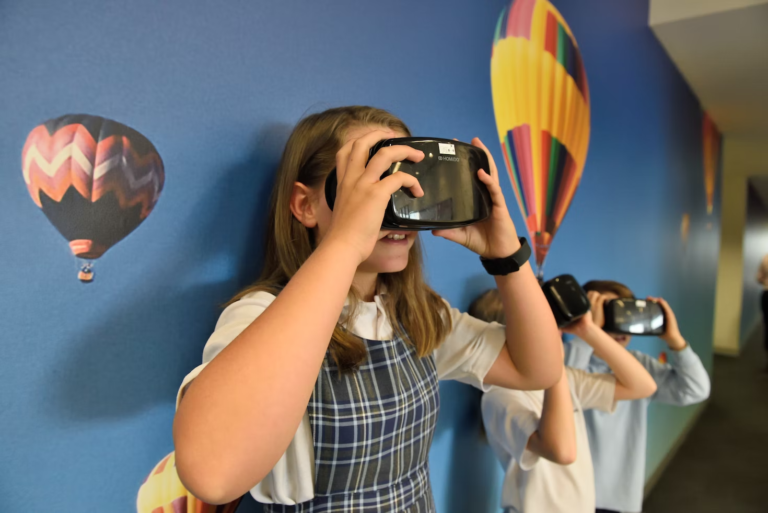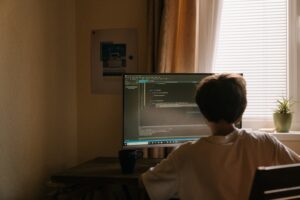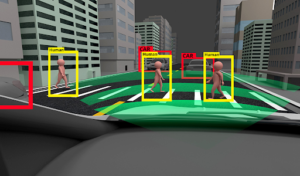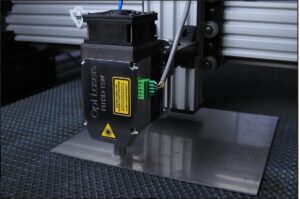Schools that don’t incorporate technology will need to catch up soon. How augmented reality (AR) and virtual reality (VR) empower learners is a never-before-seen revolution in education. It can improve subjects like math, making a once intimidating subject more approachable to learners of all abilities and styles.
How does AR accomplish these feats to improve math literacy worldwide?
Vary Learning Modalities
Most mathematics education is visual learning with an audible element. Students watch teachers write out the steps to solve an equation as they explain the process. However, this doesn’t attach to every student in the same capacity, especially for students who learn differently. So, how can you incorporate more hands-on and varied learning styles in the classroom in math — the answer is AR.
AR technologies can immerse you in math problems, providing memorable, tactile experiences in a previously two-dimensional learning environment.
“Instead of forcing students to rely solely on memorization of nebulous concepts, AR can provide students with visualizations and immersion to understand abstract ideas with spatial awareness.”
Students could manually handle axes on a graph or see how world problems play out with their provided solutions — reattempting if necessary. These technologies destroy barriers for different styles of learners while providing broader accessibility options.
Decrease Mental Resistance
No student is equally motivated or gifted in any given subject. Mathematics is one of the most intimidating subjects, which could incite trouble for STEM employers in the future. Employing AR to make learning more interactive and fun will lower mental friction. AR can instill an attitude shift in learners, mainly if 3D models through AR glasses simplify complex trigonometry by allowing students to manipulate shapes and see changes in angles in real-time.
Adding more technology to the classroom entices learning, especially in tech-dedicated generations. New students are used to engaging with the world through technology, and if that’s absent in the math classroom, they will not feel as willing to participate. AR is one tool to add variety to an otherwise stale curriculum, and it’s only compounded if teachers find other technologies to include to innovate the lessons more.
If the math doesn’t stress out students, they will have an easier time grasping concepts and motivating themselves to try — and possibly challenge their skills.
Prepare Everyone for the Workforce
Every sector will be tech-dominated in the near future — this means math and tech literacy are necessary, whether you’re an artist or scientist. AR is a practical medium that primes students for careers.
Many students feel the school doesn’t adequately prepare them for working life, and one reason for this might be the absence of modern tech tools in school walls. EdTech’s encouragement of AR could give students accurate simulations for medical residencies and computer programming internships for a more personalized learning environment.
“AR improves math literacy by revealing a greater sense of urgency to become math and tech proficient — students who want a stable job will persist with math studies because AR tools reflect how workforces operate with new tech.”
AR reeducates teachers in the same way. Tenured instructors may have fallen into complacency, following the same lesson plans for decades. You could be unfamiliar with what incoming students need to equip themselves for a tech-focused job market. In this way, AR bolsters math literacy twofold — with students and teachers. Educators will inevitably find new ways to apply math that’s more meaningful to learners and their job aspirations because tech innovations reveal new strategies yearly.
Gamify Education
In an extension to mental resistance, students feel fatigued or frustrated learning math because school isn’t inherently pleasurable or leisurely.
“However, AR encourages experimentation and exploration with a lens students crave — making math education like a game.”
AR could make multiplication tables an experience students desire to level up, regardless of how repetitive it can be. AR designers could code software to resemble mobile gaming to make it even more approachable. Math games in AR could be role-playing games with students solving geometric puzzles to enter new realms, or it could be as simple as achieving a high score in a fast-paced quiz game.
A side effect of this technology is promoting healthy competition, and raising morale and camaraderie. Most would assume AR or gaming would be a primarily solitary activity. But, it can stimulate mathematical discussions among students as they discuss improving their game. It expands educational opportunities outside the teacher’s hands, giving more agency to students to form their math literacy in a way that doesn’t feel so formal.
Using AR as Math Motivation
AR could reinvigorate student interest in mathematics. For years, math felt intangible, and now students can visualize equations and witness their impact on everyday life. Programs can act out word problems or present interactive flash cards. No matter the application, you can find ways to expand mathematics education with AR.










